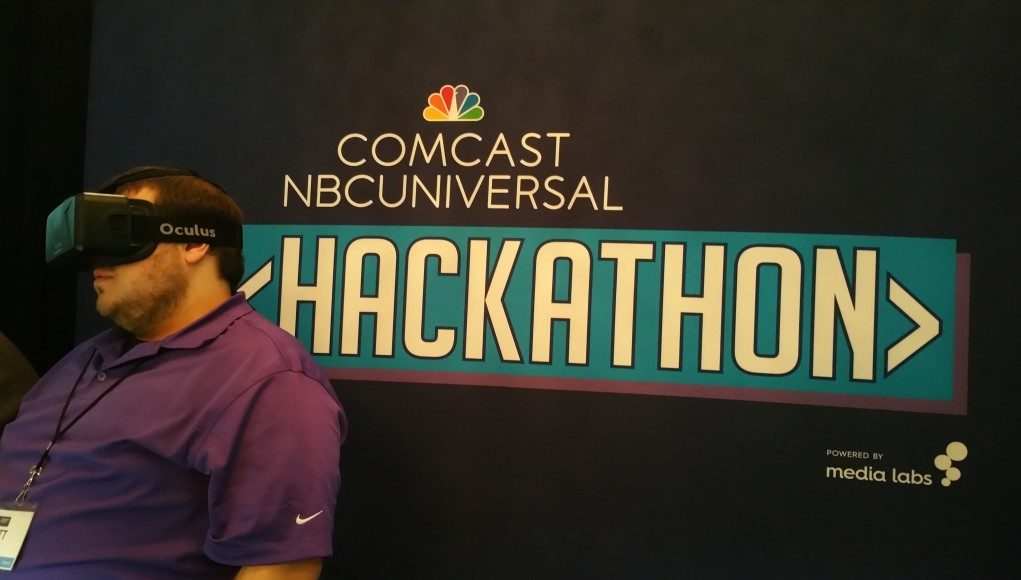Fast7: The Game
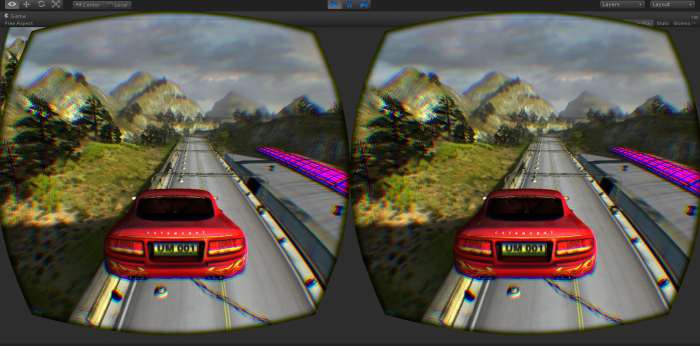
As seen with the Interstellar VR Experience, motion picture companies are beginning to salivate around the idea of using virtual reality for promotion. Having people try out a VR demo before the actual release of the movie gets them engaged in the flick even more. Taking that notion into account, a developer at the hackathon named Partha created a game where players could drive the actual cars seen in the forthcoming Fast & Furious movie, Furious 7 (2015).
See also: Paramount’s ‘Interstellar’ 4D VR Experience Lands in LA, We Go Hands On
During Partha’s presentation he said that “it is one thing to have billboards and trailers, but it’s more immersive and exciting to be in the experience.” With that in mind, he showed off his demo.
His program was coded in Unity and utilized a couple of vehicles downloaded from the asset store. The goal was create something that could be installed inside movie theaters before the release of the film.
Interactive 3D Poster, and VR Battlestar Galactica Command Center
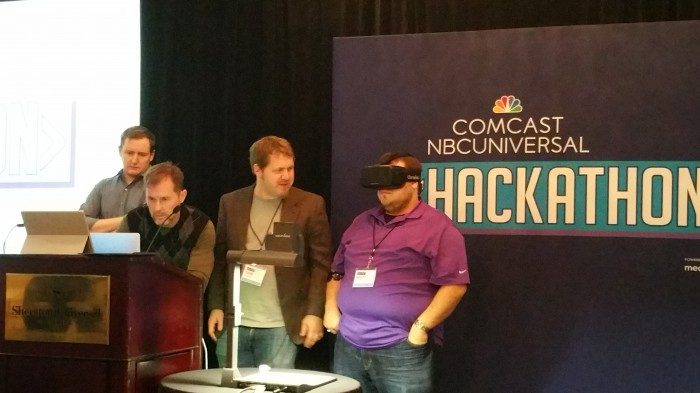
While at the hackathon, a handful of mentors had time to create their own experience as they helped other developers during the event. Being that they were among the most skilled people there, they produced some cool demos.
One of those was a high-tech poster that could sense if people were walking near it. The rig integrated a Microsoft Kinect camera and would essentially act like a magic mirror turning the people standing in front of it into characters of the upcoming movie. Their demo showed how someone could be transformed into a robot avatar which could be controlled just by moving around.
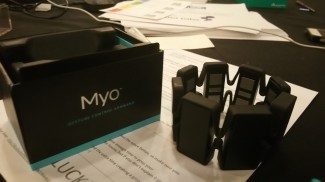
The other experience was a virtual reality program that interfaced with a gesture control input system known as Myo. As seen in Battlestar Galactica, futuristic warships are controlled through a central operated command area known at the Combat Information Center (CIC). This faintly-circular room was recreated virtually by the mentors at the hackathon who utilized the interconnected Myo device, which senses electrical pulses being sent through the body when flexing certain muscles in the arm. The armband gadget would be strapped on, along with the Oculus Rift, and could be used activate items within the room.
Once transported to the inside the command center, computer screens showed live streams of CNBC news feed content. Information from the outside world populated the virtual space. By squeezing one’s hand, the data stream could be started or stopped, thanks to the Myo. Typically VR experiences are directed with keyboards, mice, and game controllers, so it was exciting to see alternate input systems being used.
Bonus: The Voice VR Demo Chair
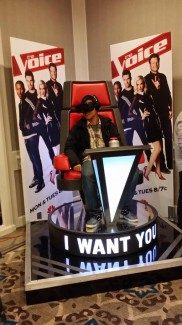
Briefly, an Oculus Rift experience was shown off which paired a VR headset to a rotating chair that depicted what it was like to be a judge on the popular singing contest show, The Voice.
Although I didn’t get a chance to try it myself, the experience was created by the folks from Kite & Lightning. As a blog post of theirs says, it’s a virtual reality experience which puts the player in the perspective of the judges while they look out at the stage. This experience wasn’t made at the hackathon but it was there as a cool demo nonetheless.

